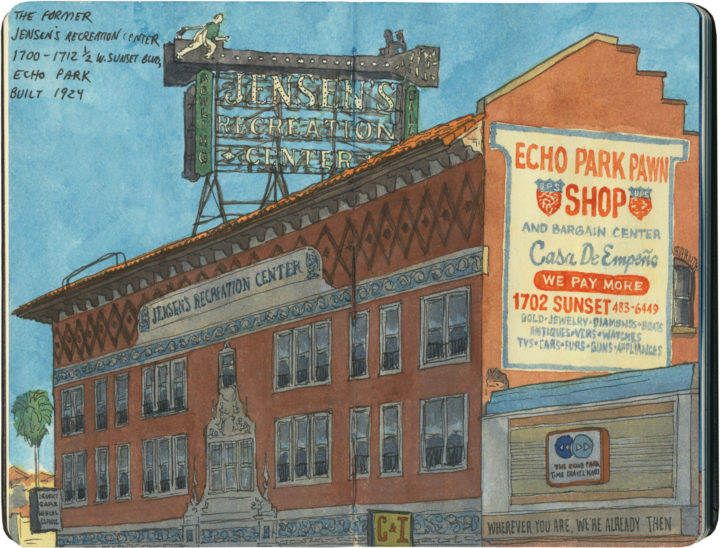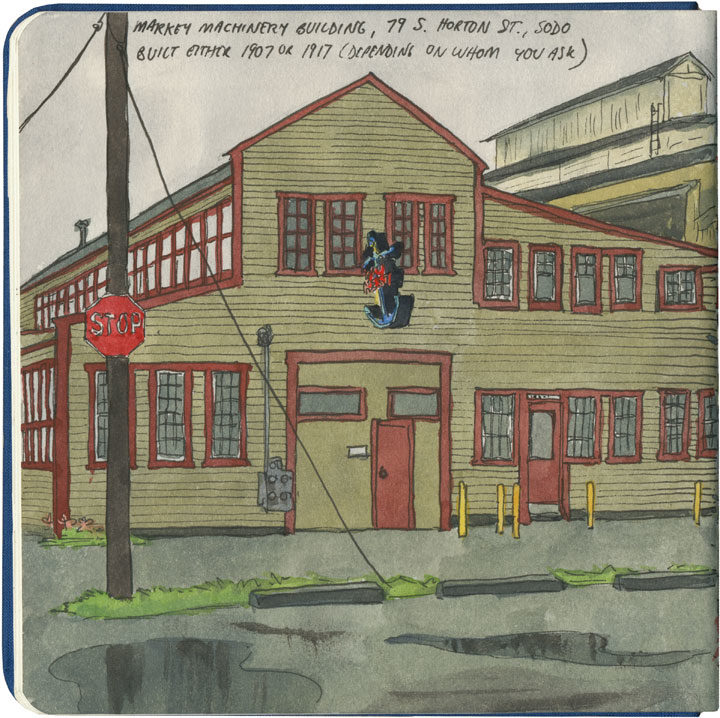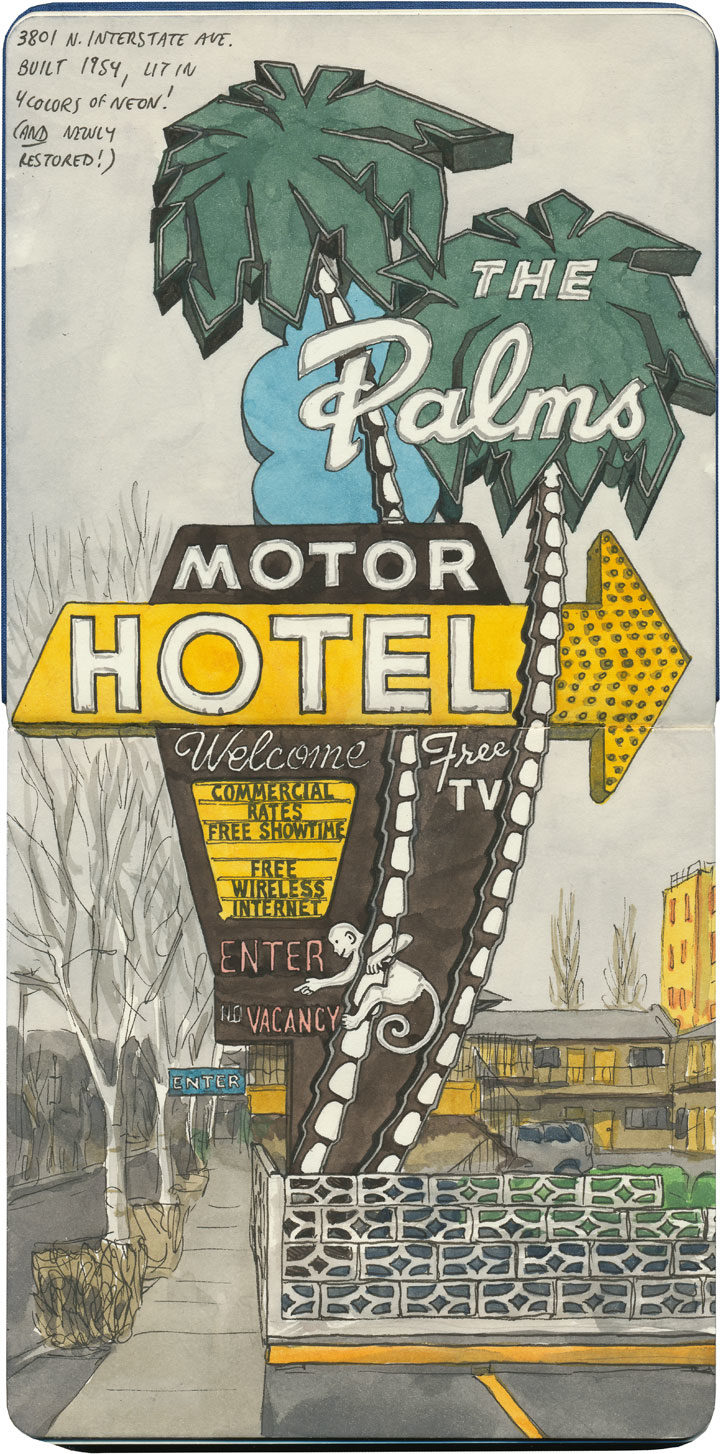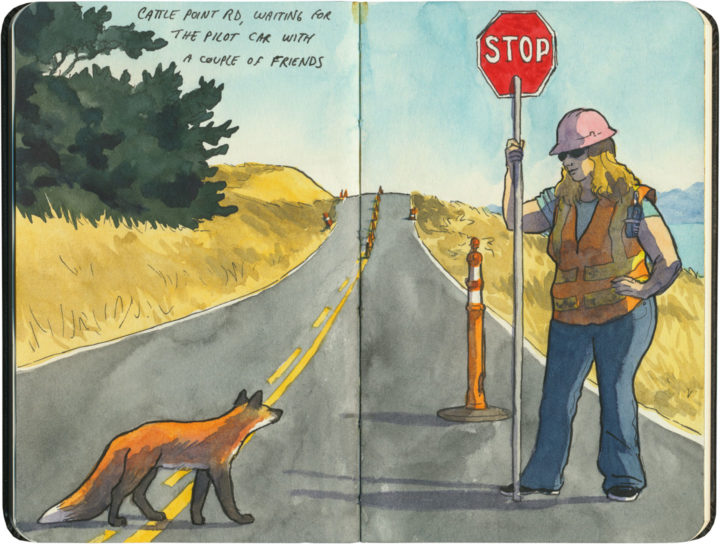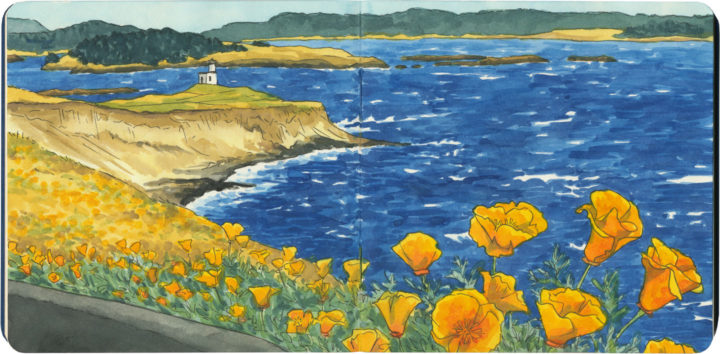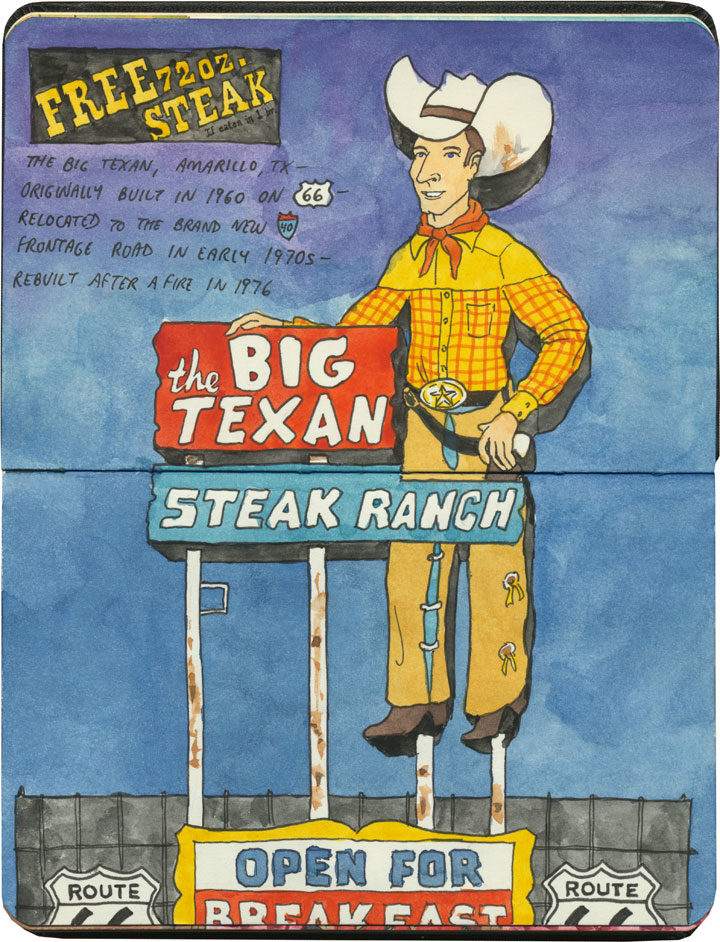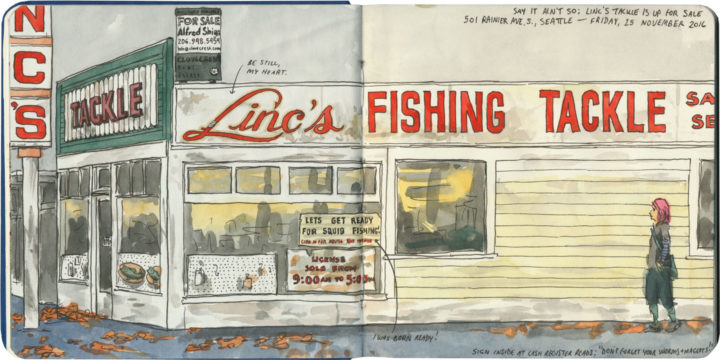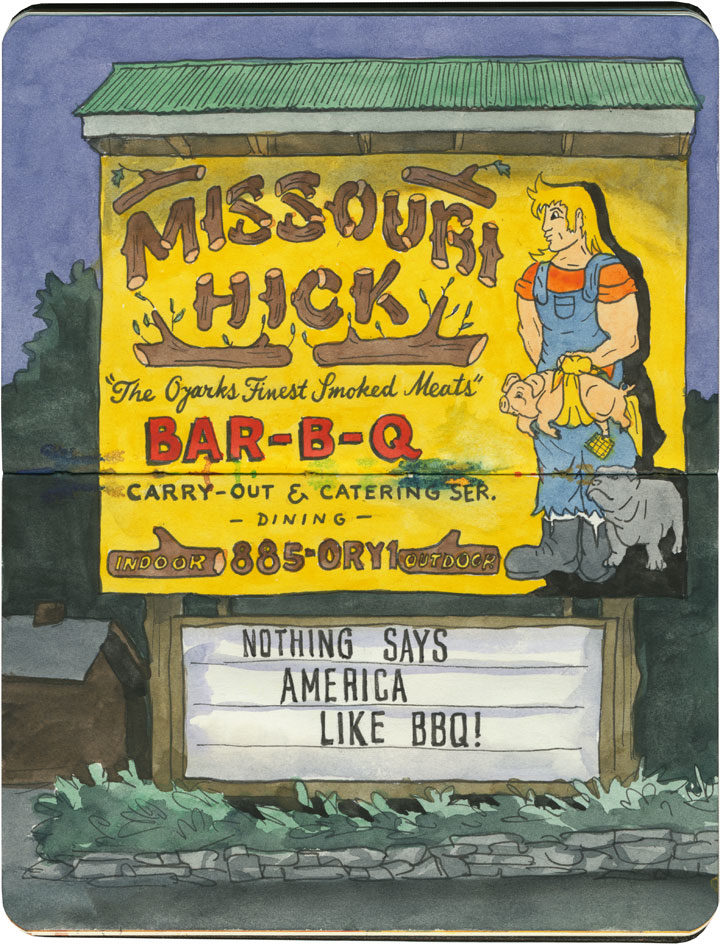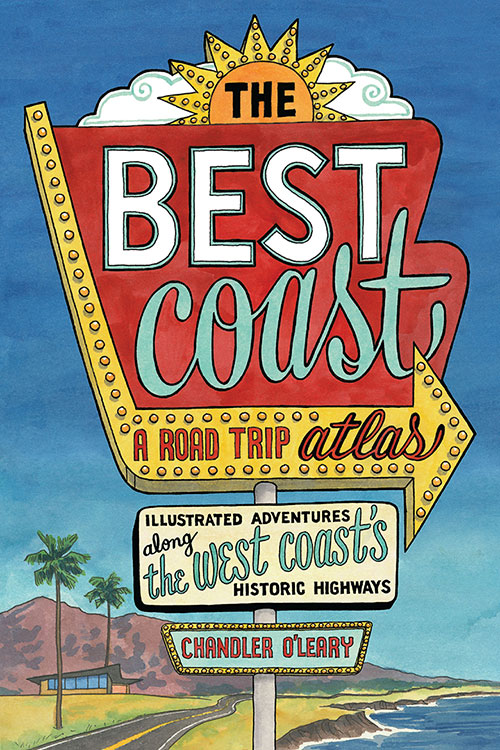
While I’ve hinted at this several times on social media, and even shown some snippets of my process along the way, mostly I’ve been sitting on my hands lately, trying my best to keep mum while I wait for time to tick by. And now the waiting is almost over, and it’s time for the big reveal of my new book!
At long last, The Best Coast: A Road Trip Atlas is almost here! This book—an entirely illustrated travel guide to the West Coast—has been a labor of love for me, spanning more than two years of work on the book itself and a solid decade of research, road trips and travel sketching. And now we’re just a little over a month away from the publication date on April 9!
I’ll be sharing a lot more here and over at my studio blog (after today, there’ll be different content in each place) in the days and weeks to come: behind-the-scenes process images, stories and sketches behind the locations featured in the book, a social media photo contest (with prizes!), and much more. And if you’re local, we’ll be throwing the official launch party right here in Tacoma:
Best Coast launch party
Wednesday, April 10, 2019
7 pm, free!
King’s Books
218 St. Helens Ave, Tacoma, WA
In the meantime, you can learn more about the book and preorder your copy on my book page! Many thanks to the team at Sasquatch Books for making this book—a dream of mine for years now—a reality! Looking forward to sharing more with you soon.
P.S. Because people always ask me, yes, preordering—as opposed to waiting until the book comes out—makes a huge difference. Books with strong preorder sales get better promotion from both the publisher and retailers, get a better ranking on huge sites like Amazon (and thus better exposure), and reach a wider audience of both customers and press outlets. So every preorder counts, and is like an extra boost of support, both for me and for your favorite retailer.
